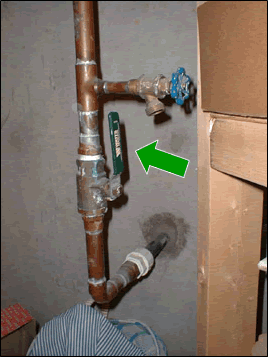When it comes to the essential components of your home, the main water shut-off valve often lurks in the background, overshadowed by more glamorous features like gleaming countertops or cozy fireplaces. However, this unassuming valve plays a critical role in protecting your home, and understanding its significance is key for every homeowner. In this blog, we’ll dive into the world of the main water shut-off valve, exploring what it is, why it matters, and how to ensure it’s in top working condition.
Understanding the Main Water Shut-Off Valve
The main water shut-off valve, also known as the main valve or water shut-off, is the gateway to your home’s water supply. Typically located near where the water main enters your property, you can find it in the basement, crawl space, utility room, or on the exterior of the building. This valve serves as the primary control point for regulating the flow of water into your house.
Why Is It Important?
- Emergency Preparedness: The main water shut-off valve is your first line of defense in case of a plumbing emergency. In the event of a burst pipe, a major leak, or a malfunctioning appliance, turning off this valve can prevent water damage, saving you from costly repairs.
- Routine Maintenance: It’s essential for routine plumbing maintenance and repairs. When you need to work on a specific plumbing fixture or pipe, shutting off the main valve allows you to isolate that area without disrupting the entire water supply to your home.
- Water Conservation: If you’re going on vacation or need to shut off the water supply for an extended period of non-use, the main valve helps conserve water and reduce utility bills.
- Safety: During natural disasters like floods or earthquakes, knowing how to turn off the main water supply is crucial to avoid contamination or further damage to your property.
How to Locate and Operate Your Main Shut-Off Valve
Understanding where to find your main shut-off valve and how to operate it is essential knowledge for homeowners.
- Locating the Valve: Begin by finding your main shut-off valve. It’s usually situated near where the water main enters your home. Look for a wheel or lever, typically made of metal, PVC, or brass.
- Shutting Off the Water: To turn off the water supply, simply turn the valve clockwise (righty-tighty). Keep in mind that it may take a few turns to completely shut off the water. To restore water flow, turn the valve counterclockwise (lefty-loosey).
- Testing: It’s a good practice to test your main shut-off valve periodically to ensure it operates smoothly. Over time, valves can become stiff or corroded, making them difficult to turn.
Maintenance Tips
- Label the Valve: To make it easier to identify in an emergency, label the main shut-off valve with a tag or paint it a distinctive color.
- Regular Inspection: Check the valve for any signs of leaks or corrosion. If you notice any issues, consider having a plumber replace it.
- Educate Household Members: Ensure that all family members know the location of the main valve and how to operate it. This is vital knowledge that can save your home from water damage.
In Conclusion
The main water shut-off valve may not be the star of your home, but it plays a pivotal role in safeguarding your property and conserving water. Knowing its location and how to use it empowers you to handle emergencies, perform routine maintenance, and ensure the longevity of your plumbing system. In the realm of home maintenance, the main shut-off valve is a quiet but essential guardian of your household’s well-being.
